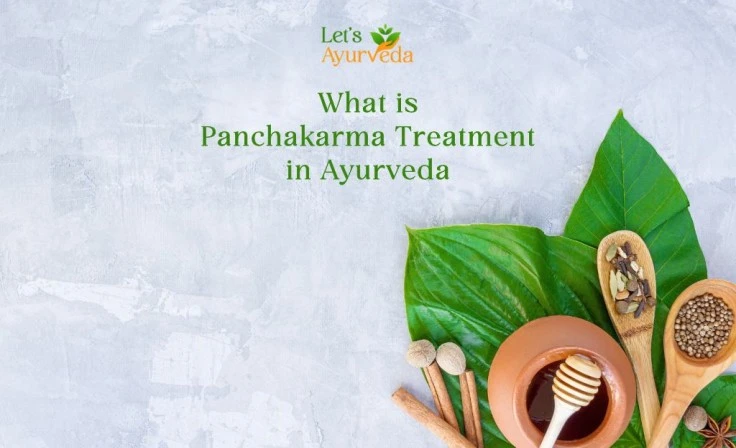Panchakarma is a renowned therapeutic procedure in Ayurveda, an ancient Indian system of medicine. It is a comprehensive detoxification and rejuvenation program that balances the body, mind, and spirit. Derived from the Sanskrit words "Pancha," meaning "five," and "karma," meaning "action," Panchakarma involves five primary therapeutic actions to eliminate toxins and restore harmony within the body. This article explores the intricacies of Panchakarma, its benefits, and the various stages involved in the treatment.
Introduction to Panchakarma
Panchakarma is a holistic and personalized treatment approach deeply rooted in Ayurvedic principles. It aims to eliminate accumulated toxins (ama) from the body, restore doshic balance, and enhance overall well-being. This therapeutic process involves a combination of detoxification, rejuvenation, and mental purification techniques.
The Philosophy Behind Panchakarma
According to Ayurveda, health issues arise when there is an imbalance in the three doshas: Vata, Pitta, and Kapha. Panchakarma addresses these imbalances by employing treatments tailored to an individual's specific constitution (Prakriti) and the nature of the disease (Vikriti). It eliminates physical toxins and aims to purify the mind and emotions.
Benefits of Panchakarma
Panchakarma offers numerous benefits, including:
- Detoxification: It aids in the removal of toxins and impurities from the body, promoting overall wellness.
- Rejuvenation: Panchakarma rejuvenates the body and mind, enhancing vitality, stamina, and longevity.
- Stress Relief: The therapies involved in Panchakarma help alleviate stress, anxiety, and mental exhaustion.
- Improved Digestion: Panchakarma treatments enhance digestive function, alleviating bloating and indigestion.
- Enhanced Immunity: It strengthens the immune system, reducing the chances of illness and boosting overall health.
- Balancing Doshas: Panchakarma brings the three doshas into equilibrium, promoting harmony and preventing diseases.
The Five Stages of Panchakarma
Panchakarma treatment consists of five distinct stages, each serving a specific purpose in detoxifying and rejuvenating.
Purva Karma (Preparatory Procedures)
In this initial stage, the body is prepared for the main treatments by undergoing oleation (external and internal oil application) and sudation (sweating). These procedures help loosen toxins and direct them toward the gastrointestinal tract for elimination.
Pradhana Karma (Main Procedures)
This stage involves the main therapeutic procedures of Panchakarma, including Vamana (emesis), Virechana (purgation), Basti (medicated enema), Nasya (nasal administration of medicines), and Raktamokshana (bloodletting). Each procedure targets different areas and aims to eliminate specific toxins.
Paschat Karma (Post-treatment Procedures)
After the main procedures, the body undergoes a period of rest and rejuvenation. Specific dietary and lifestyle recommendations are provided to consolidate the benefits of the treatment and restore balance within the body.
Rasayana Therapy (Rejuvenation)
Rasayana therapy focuses on rejuvenating and nourishing body tissues, promoting longevity and vitality. It involves the administration of herbal formulations and personalized dietary guidelines.
Satvajaya (Mental Rejuvenation)
Satvajaya refers to mental rejuvenation techniques such as meditation, yoga, and pranayama. These practices help calm the mind, reduce stress, and enhance mental clarity.
Factors to Consider Before Undergoing Panchakarma
Before commencing Panchakarma treatment, several factors should be considered:
- Consult with an experienced Ayurvedic practitioner to assess your health condition and determine the suitability of Panchakarma for you.
- You understand the contraindications and precautions associated with Panchakarma to ensure your safety during the treatment.
- Setting aside sufficient time for the treatment typically requires several days to a few weeks to complete the entire process.
Panchakarma and Doshas
Panchakarma treatments are customized based on an individual's predominant dosha(s). Vata-related disorders are treated with therapies that focus on nourishing and calming the nervous system, while Pitta-related ailments are addressed through cooling and detoxifying procedures. Kapha-related conditions are treated with techniques that stimulate metabolism and remove stagnation.
Common Therapies in Panchakarma
Panchakarma incorporates a range of therapies tailored to an individual's needs and health condition. Some standard treatments include:
Abhyanga (Therapeutic Massage)
Abhyanga involves a synchronized massage performed by trained therapists using medicated oils. This therapy improves blood circulation, lubricates joints, nourishes the skin, and promotes relaxation.
Shirodhara (Pouring of Medicated Oil on the Forehead)
Shirodhara is a gentle pouring of warm medicated oil on the forehead, targeting the region of the third eye. This therapy helps calm the mind, alleviate stress, and promote mental clarity.
Virechana (Purgation)
Virechana involves the administration of herbal laxatives to induce controlled purgation. It eliminates excess Pitta and toxins from the body, particularly the gastrointestinal tract and liver.
Basti (Medicated Enema)
Basti is the process of administering herbal decoctions or oils through the rectum. It cleanses the colon, balances Vata dosha, and aids in the elimination of accumulated toxins.
Nasya (Nasal Administration of Medicines)
Nasya involves the administration of medicated oils or herbal powders through the nasal passages. This therapy helps alleviate respiratory issues, improve mental clarity, and relieve sinus congestion.
Duration of Panchakarma Treatment
The duration of Panchakarma treatment varies depending on the individual's health condition, goals, and the severity of the imbalance. Generally, the treatment ranges from 7 to 21 days, but it can sometimes be extended for maximum benefits.
Aftercare and Maintenance
After completing Panchakarma treatment, following post-treatment guidelines provided by the Ayurvedic practitioner is essential. This may include a specific diet, lifestyle recommendations, and herbal formulations to support the body's ongoing detoxification and rejuvenation process.
Conclusion
Panchakarma treatment in Ayurveda offers a holistic approach to detoxification and rejuvenation. By addressing the root cause of imbalances, Panchakarma helps restore health and vitality on physical, mental, and spiritual levels. Consultation with an experienced Ayurvedic practitioner is crucial to determine the most suitable Panchakarma plan for individual needs, ensuring optimal results.
Frequently Asked Questions (FAQs)
What are the side effects of Panchakarma treatment?
Panchakarma is generally safe when performed by trained professionals. However, some individuals may experience mild detoxification symptoms such as fatigue, headaches, or temporary worsening of existing symptoms.
Can anyone undergo Panchakarma treatment?
Panchakarma is highly individualized and should be undertaken under the guidance of an Ayurvedic practitioner who can assess your specific needs, health condition, and suitability for the treatment.
How long does a Panchakarma session last?
The duration of a Panchakarma session can vary based on the therapies involved. Some treatments may last a few minutes, while others may take up to an hour.
Is Panchakarma only for physical ailments?
Panchakarma addresses imbalances on physical, mental, and emotional levels. It can benefit a wide range of conditions, including physical and psychological ailments.
What precautions should I take after Panchakarma?
After Panchakarma, following the aftercare guidelines provided by your Ayurvedic practitioner, including dietary modifications, lifestyle recommendations, and herbal support, is essential to maintain the balance achieved during the treatment.






